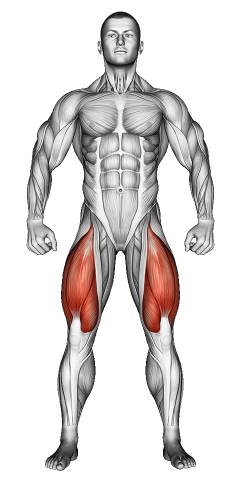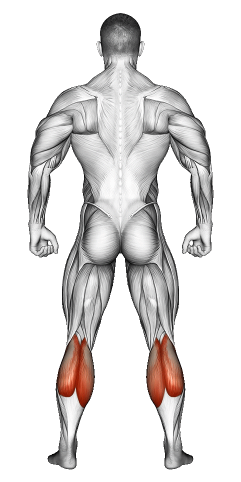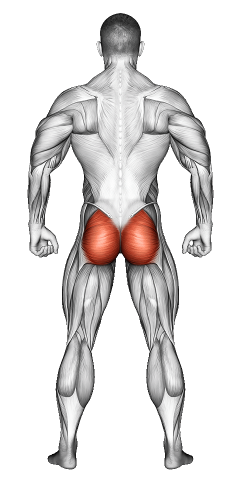Stationary Bodyweight Lunge: Video Tutorial & Exercise Guide

Written By: Claude Michael
Updated: Oct 13, 2024
| Workout | Stationary Bodyweight Lunge |
| Primary Muscle Group | Quads |
| Secondary Muscle Group | Calves, Glutes |
| Equipment Required | Bodyweight |
| Force Type | Push |
| Mechanics | Isolation |
| Exercise Type | Strength |
| Difficulty | Intermediate |
Stationary Bodyweight Lunge: Video Tutorial & Exercise Guide
- 1.Stationary Bodyweight Lunge: Muscle Groups
- -1.1Primary Muscle Group
- -1.2Secondary Muscle Group
- 2.Stationary Bodyweight Lunge: Step-by-Step Guide
- 3.Stationary Bodyweight Lunge: Overview
- 4.Stationary Bodyweight Lunge: Benefits
- 5.Stationary Bodyweight Lunge: Pro Tips & Advanced Techniques
- 6.Stationary Bodyweight Lunge: Progression Plan
- 7.Stationary Bodyweight Lunge: Frequently Asked Questions (FAQs)
Stationary Bodyweight Lunge: Step-by-Step Guide
- Step 1: Stand tall with your feet hip-width apart, hands on your hips or by your sides for balance. Keep your chest lifted and your core engaged.
- Step 2: Step forward with your right leg and lower your hips by bending both knees. Your right thigh should be parallel to the ground, and your left knee should hover just above the floor.
- Step 3: Make sure your right knee is aligned with your toes and doesn't extend past them. Keep your back straight and your torso upright.
- Step 4: Push through your right heel to return to the starting position without moving your feet.
- Step 5: Perform the desired number of reps on one leg, then switch to the other leg and repeat the movement.
Stationary Bodyweight Lunge: Overview
The Stationary Bodyweight Lunge is a foundational lower-body exercise that targets the quadriceps, hamstrings, glutes, and calves. Unlike walking lunges, this variation keeps your feet in place, making it easier to maintain balance while still providing the same strength-building benefits.
Stationary lunges help build strength, endurance, and mobility in the lower body while also engaging the core for stability. They are a great option for beginners or those looking to focus on controlled, isolated movements without the added challenge of stepping forward or backward.
Stationary Bodyweight Lunges: Benefits
Stationary Bodyweight Lunges primarily target the quadriceps, hamstrings, and glutes, helping to build strength and improve muscle endurance. This exercise also engages the calves and core, improving stability and balance.
Since your feet stay in place, the stationary lunge places less strain on the knees compared to dynamic lunge variations. This makes it a great exercise for those with knee sensitivities or anyone looking to improve their lunge form before progressing to more advanced movements.
Stationary lunges also promote better hip flexibility and mobility, which can help improve movement patterns and reduce the risk of injury during other activities.
Stationary Bodyweight Lunges: Pro Tips & Advanced Techniques
Focus on keeping your torso upright and your core engaged throughout the movement. Push through your front heel to maximize glute and hamstring activation. For added intensity, try holding dumbbells or slow down the eccentric (lowering) phase to increase time under tension. Ready to build leg strength? Let’s lunge!
Stationary Bodyweight Lunges: Progression Plan
Beginner
Intermediate
Advanced
Stationary Bodyweight Lunge: Frequently Asked Questions (FAQs)
What muscles do Stationary Bodyweight Lunges target?
+This exercise primarily targets the quadriceps, hamstrings, and glutes, while also engaging the calves and core for stability.
Are Stationary Bodyweight Lunges suitable for beginners?
+Yes, stationary lunges are ideal for beginners because they allow you to focus on form and balance without the added movement of stepping forward or backward.
How can I make Stationary Bodyweight Lunges more challenging?
+To increase difficulty, hold dumbbells for added resistance, slow down the movement, or add an overhead press with weights to engage your upper body and core further.
How often should I include Stationary Bodyweight Lunges in my routine?
+Include this exercise 2-3 times per week as part of your lower body or full-body workout. It pairs well with other leg exercises like squats and step-ups for a comprehensive leg routine.
What common mistakes should I avoid?
+Avoid letting your front knee extend past your toes or collapsing inward. Focus on keeping your chest upright, core engaged, and knees aligned with your toes throughout the movement.
Share
Don’t Wish for It, Work for It – Join the FlexXP Newsletter Today!
Thank you for signing up for the FlexXP Newsletter!
This site is protected and the Google Privacy Policy and Terms of Service apply.


